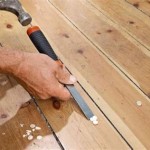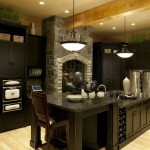Underlay for Engineered Wood Floors: A Comprehensive Guide
Engineered wood flooring offers a compelling alternative to solid hardwood, providing the aesthetic appeal of natural wood with enhanced stability and affordability. However, the performance and longevity of an engineered wood floor are significantly influenced by the underlayment chosen. An underlay is a thin layer of material installed between the subfloor and the flooring, serving several crucial functions. This article provides a comprehensive overview of underlay for engineered wood floors, exploring its purpose, types, selection criteria, and installation considerations.
The selection of an appropriate underlayment is not merely an afterthought but an integral part of the flooring system. It directly impacts the floor's comfort, acoustic properties, and resistance to moisture. Ignoring the importance of underlay can lead to problems such as premature wear, uneven surfaces, and increased noise levels, potentially negating the benefits of choosing engineered wood in the first place.
Key Purposes of Underlayment
Underlayment for engineered wood flooring serves several essential purposes, each contributing to the overall performance and lifespan of the floor. These can be broadly categorized as moisture protection, sound reduction, and subfloor leveling.
Moisture Protection: Subfloors, particularly those made of concrete, can often harbor moisture. This moisture can seep upwards and damage the engineered wood flooring, causing warping, cupping, and even mold growth. Underlayment acts as a barrier, preventing moisture from reaching the wood. Some underlayments are specially designed with a vapor barrier to provide superior moisture resistance. This is particularly important in basements or areas prone to high humidity.
Sound Reduction: Foot traffic and other impacts on an engineered wood floor can generate significant noise, especially in multi-story buildings. Underlayment with sound-absorbing properties can significantly reduce the transmission of sound to the rooms below. This is achieved by dampening vibrations and absorbing sound waves. The effectiveness of sound reduction is typically measured by the Impact Insulation Class (IIC) rating, with higher numbers indicating better sound absorption.
Subfloor Leveling: While engineered wood flooring can tolerate minor subfloor imperfections, larger irregularities can lead to unevenness and instability. Underlayment can help to smooth out minor imperfections in the subfloor, providing a more even surface for the flooring. This is particularly important for click-lock engineered wood floors, as unevenness can compromise the integrity of the locking mechanism.
Beyond these primary purposes, underlayment can also provide additional thermal insulation, making the floor warmer and more comfortable underfoot. It also acts as a cushion, improving the overall feel of the floor and reducing fatigue.
Types of Underlayment
Various types of underlayment are available for engineered wood floors, each with its own set of properties and advantages. The choice of underlayment will depend on the specific needs of the project, including the subfloor type, the desired level of moisture protection and sound reduction, and the budget.
Foam Underlayment: Foam underlayment is a popular and affordable option, typically made from polyethylene or polypropylene. It provides a basic level of moisture protection, sound reduction, and cushioning. Foam underlayment is available in various thicknesses and densities, with higher density foams generally offering better performance. However, foam underlayment may not be suitable for areas with high levels of moisture or uneven subfloors.
Cork Underlayment: Cork underlayment is a natural and sustainable option made from the bark of cork oak trees. It offers excellent sound insulation, thermal insulation, and moisture resistance. Cork is also naturally antimicrobial and resistant to mold and mildew. Cork underlayment is generally more expensive than foam, but its superior performance and environmental benefits make it a worthwhile investment for many homeowners.
Rubber Underlayment: Rubber underlayment is another excellent choice for engineered wood floors, offering exceptional sound insulation and durability. It is typically made from recycled rubber, making it an environmentally friendly option. Rubber underlayment is particularly effective at reducing impact noise, making it ideal for apartments and other multi-story buildings. It is also more resistant to compression than foam, making it suitable for areas with heavy foot traffic.
Combination Underlayment: These underlayments combine different materials to offer a balance of properties. For example, some combination underlayments consist of a foam core with a moisture barrier film attached. Others may combine cork and rubber for enhanced sound insulation and moisture resistance. Combination underlayments can provide a cost-effective solution for projects requiring multiple benefits.
Specialty Underlayment: These are designed for specific situations. For example, some underlayments are designed for use with radiant heating systems, allowing heat to transfer efficiently through the floor. Others are specifically designed for uneven subfloors, providing extra leveling and support.
Factors to Consider When Choosing Underlayment
Selecting the right underlayment for an engineered wood floor requires careful consideration of several factors. Ignoring these factors can lead to problems such as floor damage, increased noise levels, and voided warranties.
Subfloor Type: The type of subfloor will significantly influence the underlayment selection. Concrete subfloors are prone to moisture, requiring underlayment with a robust vapor barrier. Wooden subfloors, on the other hand, may require underlayment with better sound insulation properties. Ensuring compatibility between the underlayment and the subfloor is crucial for long-term performance.
Moisture Level: The level of moisture in the environment should also be considered. In areas with high humidity, such as basements or bathrooms, underlayment with a built-in moisture barrier is essential. Testing the subfloor for moisture content before installation is recommended to prevent future problems.
Sound Reduction Requirements: If sound insulation is a priority, choose an underlayment with a high Impact Insulation Class (IIC) rating. Rubber and cork underlayments are generally the most effective at reducing impact noise. Check local building codes for minimum IIC requirements, particularly in multi-story buildings.
Floor Thickness and Type: The thickness and type of engineered wood flooring will also influence the choice of underlayment. Thicker flooring may not require as much cushioning from the underlayment, while thinner flooring may benefit from a thicker, more resilient underlayment. The locking mechanism of the flooring should also be considered, as some underlayments can interfere with the proper engagement of the locking system.
Warranty Requirements: Some engineered wood flooring manufacturers have specific requirements for underlayment. Using an underlayment that does not meet these requirements can void the floor's warranty. Always check the manufacturer's recommendations before selecting underlayment. It’s critical to keep records of the underlayment used, along with the floorings receipt, should a claim ever be needed.
Budget: Underlayment prices can vary significantly depending on the material and performance characteristics. Set a budget and prioritize the most important features based on specific needs. It's important to remember that investing in a high-quality underlayment can save money in the long run by preventing costly floor repairs.
Installation Method: Consider the installation method of the engineered wood flooring. Some flooring is glued down, requiring a specific type of underlayment that is compatible with adhesives. Other flooring is floating, allowing for a wider range of underlayment options.
Proper installation of underlayment is just as important as choosing the right type. Failure to install it correctly can compromise its performance and even damage the flooring. Ensure the subfloor is clean, level, and dry before installing the underlayment. Follow the manufacturer's instructions carefully and use the recommended tools and materials.
Furthermore, it is important to inspect the underlayment upon delivery. Check for any damages or defects that could compromise its performance. Measure the area where the underlayment will be installed to ensure that you have enough material. It is always better to have a little extra than to come up short during installation.

Hardwood Floor Underlayment Ultimate Guide

Quietwalk 100 Sq Ft 3 X 33 Mm Underlayment With Sound And Moisture Barrier For Laminate Engineered Floors Qw100b1lt The Home

The Advantages Of Poly Foam Underlay Blog Floorsave

Choosing The Best Underlay For Engineered Wood Flooring Mr Sander

Choosing The Best Underlay For Engineered Wood Flooring Mr Sander

Hardwood Floor Underlayment Options

Quietwalk 360 Sq Ft 6 X 60 3 Mm Underlayment With Sound And Moisture Barrier For Laminate Engineered Floors Qw360b1lt

Quietwalk Plus 100 Sq Ft Flooring Underlayment

Rubber Underlayment

Floating Solid And Engineered Wood Flooring British Hardwoods Blog







